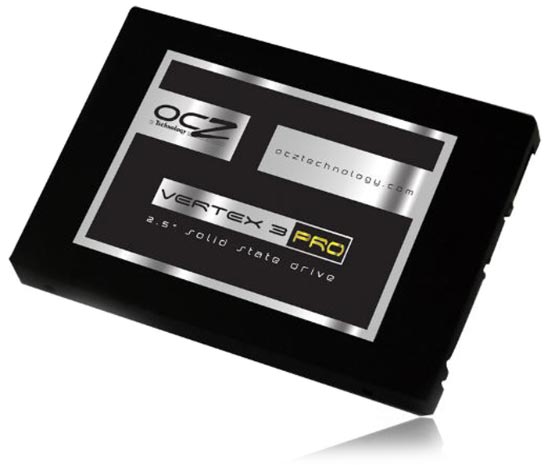OCZ Vertex 3 Pro SandForce SF-2000 Based SSD Preview
Introduction and Specifications
OCZ Technologies’ Vertex 2 series of products are undeniably some of the more popular Solid State Drives currently on the market. Since their introduction, the drives have offered excellent performance, competitive prices (which have dropped considerably in recent weeks), and excellent support in terms of constant firmware updates and guidance / tweaks via the OCZ forum community, from both customers and OCZ staff.
While the Vertex 2 is still amongst the elite SSDs available, OCZ is reading a family of follow-up products that are going to raise the bar considerably. Like the Vertex 2, the upcoming Vertex 3 series of products leverages SandForce’s excellent SSD controller technology, but this time around SandForce’s next-gen SF-2000 family of processors are at the heart of the drives. As it turns out, SandForce's SF-2000 improves upon their previous generation of controllers in essentially every way.
Although products are not quite ready for retail, OCZ gave us the opportunity to take a beta, engineering sample of their upcoming Vertex 3 Pro enterprise-class SSD for a spin and we’ve got our preliminary evaluation posted on the pages ahead. Before you jump to the benchmark pages to see how the Vertex 3 Pro performs, we must warn you—your current storage setup is about to feel woefully inadequate.

|

OCZ Vertex 3 Pro 200GB Engineering Sample
The OCZ Vertex 3 Pro engineering sample we received was devoid of any branding. But it’s not what’s outside that counts. It’s the cutting edge slab of silicon inside that makes the magic happen.
The drive you see pictured here is a 200GB Vertex 3 Pro. It features the same 2.5” form factor as the vast majority of SSDs currently on the market, however, its PCB sets it apart from most products. What you see above is a SandForce SF-2582 controller paired to 16 Toshiba MLC NAND flash memory chips. Also present on the PCB is a “super-cap” that’s designed to hold enough of a charge to power the drive long enough to complete any queued write operations in the event of a power failure. This is a feature targeted at the enterprise market and won’t make it into consumer-class products.
The sum total of NAND Flash memory present on the drive is actually 256GB, but like many previous-gen SandForce-based SSDs, 28% of the capacity is provisioned for data protection, wear leveling, and other functions, bringing the available capacity down to 200GB (186GB formatted).
According to its specs, this SATA 6G drive is rated for 550MB/s max read speeds with 500MB/s writes and up to 70K IOPS. Yes, you read that correctly. This drive’s performance could potentially double, or even triple, that of some current-gen products being sold today in some scenarios.






